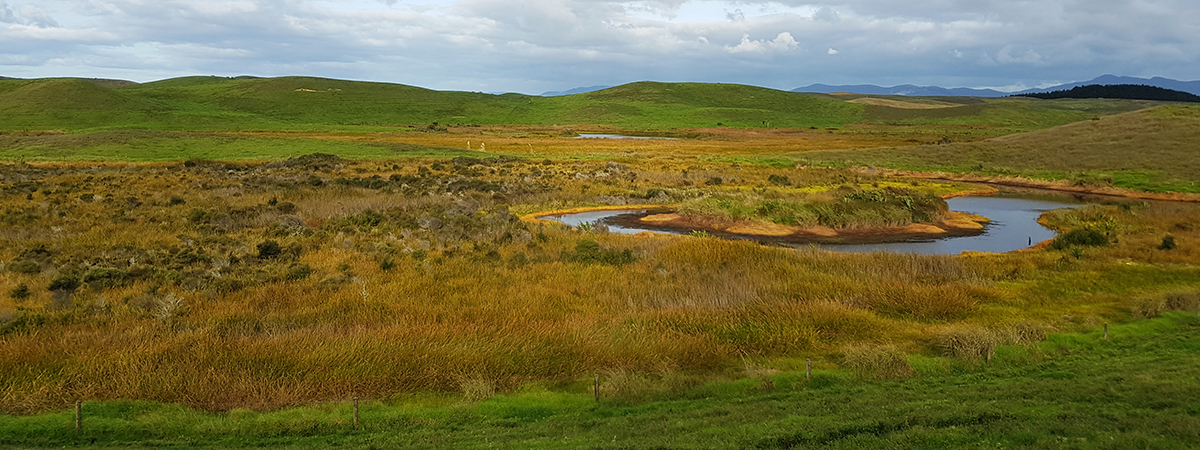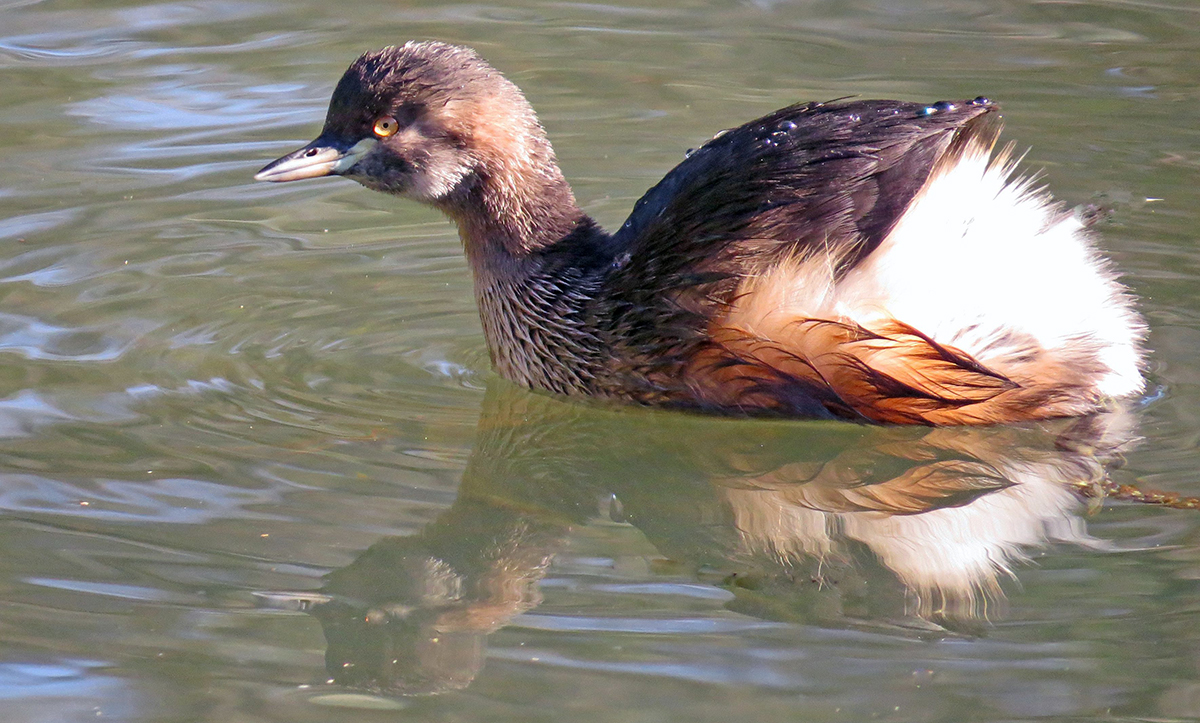Working together to care for biodiversity
Biological diversity, or Biodiversity for short, is the variety of all life forms – plants, animals, micro-organisms and the ecosystems on land or in the water where they live.
Our native flora and fauna is taonga (treasured possession) – it's under threat, and we are losing ground in many cases.
Halting and reversing the decline of our biodiversity can only be successful if we work together with tāngata whenua, landowners and our communities.
We are one of the organisations whose job it is to maintain and protect our native biodiversity. We also support individuals and groups to keep the momentum of their biodiversity work going.
By working together, we'll make the biggest difference.
If you're an individual or a community group or a landowner and you are looking for help with maintaining the biodiversity of Northland – we can help.
Our Biodiversity Advisors can provide science-based advice, help with biodiversity plans, environment funding applications, support mātauranga Māori (Māori knowledge) gathering and help with partnership projects. We can help groups or individuals by providing education through on-site consultations, botanical surveys, letters of support for external funding applications and wetland monitoring.
Get in touch with our Biodiversity Advisors at: biodiversity@nrc.govt.nz
Environment Fund
The Environment Fund helps with the cost of projects that protect Northland's environment – like protecting bush blocks and improving water quality.
Through the Environment Fund we can provide funding for fencing of sensitive areas on private land such as waterways, wetlands and water bodies, especially high-value dune lakes.
The benefits of fencing
Fenced waterways and bush blocks provide habitat for native species. Fencing these areas improves stock management and makes it easier to manage pasture with strip grazing. Native species such as bees and earthworms can then thrive - providing pasture pollination and improving soil fertility.
The value of wetlands
Did you know peat bogs and fens store 10 times more carbon than other ecosystems? Wetlands help prevent flooding and provide necessary habitat for many species of native animals and plants only found in New Zealand, many of which are rare or threatened with extinction. By restoring or creating a new wetland, the natural biodiversity of the land can return, and you'll be helping fight climate change. We can contribute (subject to criteria) to the costs of fencing out stock from waterways and wetlands through the Environment Fund.
Bio-fund
Northland Regional Council’s Bio-fund fund is available for landowners and community groups to support pest control on private land in Northland. The Bio-fund can cover the cost of traps, bait stations, bait/toxins, herbicides, tools, equipment and other hardware or training at the discretion of the council's Biosecurity Manager.

Te Wai O Tikiahi.
Why does biodiversity matter?
It's part of who we are. Nature underpins our identity and wellbeing, from calling ourselves kiwis to the silver fern on our sport shirts, and our pride in the pristine and spectacular land and seascapes we call home. We treasure the recreation available to us be it tramping, fishing, biking or swimming.
It's critical to our survival. Nature provides us with services that are crucial to our survival such as plant pollination; climate stabilisation; flood mitigation; water purification; erosion control; shelter and shade, soil formation as well as our freshwater; food; medicines; wood and fibre.
The economy is a subset of the environment. Much of our economic income is derived from farming, forestry and tourism. All of these industries rely on nature - soils, freshwater, a stable climate and the great outdoors. Without a healthy, resilient and diverse environment, we won't have a healthy, resilient and diverse economy.
Our biodiversity is in decline. Biodiversity in New Zealand continues to decline due to introduced predators and habitat loss. More than 3,000 native species are classified as threatened or at risk, and around 800 of these species face the risk of extinction.
Biodiversity can help fight climate change. Climate change is impacting on biodiversity. Impacts are changes to marine and land ecosystem productivity and disruption of freshwater ecosystems due to warmer water and lower flows in rivers and streams. Biodiversity can help provide stability and resilience as we adapt to the fluctuations and disturbances brought about by climate change.
Freshwater environments
Wetlands
The term 'wetland' covers habitats where the land is covered in, or saturated by, water for at least some of the time.
Find out about the different types of wetlands we have in Northland and why they are important
Lakes
Northland has more than 400 dune lakes, found within old dune systems mostly on the west coast. They are often dynamic, with fluctuating water levels and shorelines that are frequently changed by shifting sand dunes.
Find out more about our freshwater lakes and watch the "Hidden Gems" three-part video series
Rivers and streams
Northland has an extensive network of rivers and streams which, in comparison to other places in New Zealand, are relatively short with small catchments. There are more than 1,400 source-to-sea surface water catchments. Most major rivers flow into sheltered harbours and they are generally slow flowing and muddy.
Terrestrial environments
Dune systems
Sculptured by wind and water, these systems are characterised by vast areas of dunes plus wetlands, ponds, lakes and unique forests with plant and animal communities all adapted for life on sand.
Forests
Thirty three percent of the 1.25 million hectares of Northland's terrestrial land area is in indigenous vegetation. Of this – twenty-six percent is original native forest cover. Most of the cover is forest and shrubland (or scrub) that's dominated by regenerating manuka or kanuka. Many of Northland forests are characterised by kauri, both mature and regenerating stands.
Coastal and marine environments
Northland has 3025 kilometres of coastline, including 14 major harbours, many smaller estuaries, rocky shoreline and long stretches of open, sandy coastline. Coastal habitats include mangrove forests, saltmarsh, seagrass beds, intertidal sand and mud flats, rocky reef, kelp forests and sub-tidal soft bottom sediment.
Northland's coastal waters contain the highest diversity of fish and invertebrates of any region in mainland New Zealand and contain marine ecosystems of national and regional importance.

Australasian Grebe. (Image: A Wild Capture Image Library).
Everyone can do something to help protect our native biodiversity, whether it be as simple as keeping your cat indoors during the night or planting natives and trapping pests.
Control pest animals
Possums chomp their way through thousands of tonnes of native forest and eat birds' eggs, chicks and insects. Rats and mice are big predators of native wildlife and the food they eat. Where pest animal numbers are reduced by using traps or poison, bird numbers soon recover, and the health of our forests improves.
Find out more: Pest Control Hub
Plant natives
Native plants provide homes and food for our birds, lizards and insects. Some native plants, like kowhai, flower at the time native birds, like tui, need extra energy for their breeding season. That's why you see tui drinking the nectar during spring.
Find out more: Get a copy of our Northland native plant guide from our publications section
Remove pest plants
There are at least 35,000 introduced plant species in New Zealand, but only around 2,000 native plant species. Many of the introduced plants have become pest plants; invasive or environmental weeds which have self-perpetuating populations that disrupts the structure and functioning of indigenous ecosystems. We can all do our bit to give our native plants a better chance of survival by removing pest plants and weeds
Find out more: Pest Control Hub
Restore wetlands and streamsides
Wetlands provide a habitat for native plants and animals, make your property more attractive and improve your water quality. Fencing and planting your streamsides, also known as riparian margins, have substantial benefits for you and the environment.
Find out more: Go to information about looking after your wetland | Go to the Clean Streams - A guide to riparian management
Get in touch
Get in touch with our Biodiversity Advisors at: biodiversity@nrc.govt.nz for more information and help.
